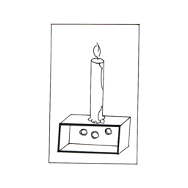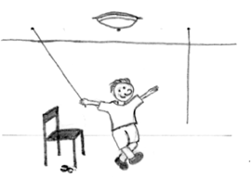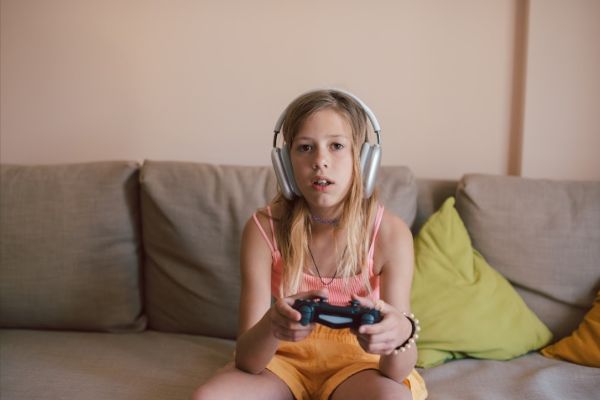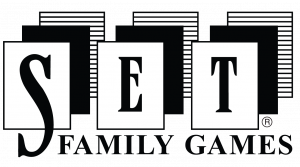
- school Campus Bookshelves
- menu_book Bookshelves
- perm_media Learning Objects
- login Login
- how_to_reg Request Instructor Account
- hub Instructor Commons
- Download Page (PDF)
- Download Full Book (PDF)
- Periodic Table
- Physics Constants
- Scientific Calculator
- Reference & Cite
- Tools expand_more
- Readability
selected template will load here
This action is not available.


6.8: Blocks to Problem Solving
- Last updated
- Save as PDF
- Page ID 54768

- Mehgan Andrade and Neil Walker
- College of the Canyons
Sometimes, previous experience or familiarity can even make problem solving more difficult. This is the case whenever habitual directions get in the way of finding new directions – an effect called fixation.
Functional Fixedness
Functional fixedness concerns the solution of object-use problems. The basic idea is that when the usual way of using an object is emphasised, it will be far more difficult for a person to use that object in a novel manner. An example for this effect is the candle problem : Imagine you are given a box of matches, some candles and tacks. On the wall of the room there is a cork- board. Your task is to fix the candle to the cork-board in such a way that no wax will drop on the floor when the candle is lit. – Got an idea?

Explanation: The clue is just the following: when people are confronted with a problem
and given certain objects to solve it, it is difficult for them to figure out that they could use them in a different (not so familiar or obvious) way. In this example the box has to be recognized as a support rather than as a container.
A further example is the two-string problem: Knut is left in a room with a chair and a pair of pliers given the task to bind two strings together that are hanging from the ceiling. The problem he faces is that he can never reach both strings at a time because they are just too far away from each other. What can Knut do?

Solution: Knut has to recognize he can use the pliers in a novel function – as weight for a pendulum. He can bind them to one of the strings, push it away, hold the other string and just wait for the first one moving towards him. If necessary, Knut can even climb on the chair, but he is not that small, we suppose…
Mental Fixedness
Functional fixedness as involved in the examples above illustrates a mental set - a person’s tendency to respond to a given task in a manner based on past experience. Because Knut maps an object to a particular function he has difficulties to vary the way of use (pliers as pendulum's weight). One approach to studying fixation was to study wrong-answer verbal insight problems. It was shown that people tend to give rather an incorrect answer when failing to solve a problem than to give no answer at all.
A typical example: People are told that on a lake the area covered by water lilies doubles every 24 hours and that it takes 60 days to cover the whole lake. Then they are asked how many days it takes to cover half the lake. The typical response is '30 days' (whereas 59 days is correct).
These wrong solutions are due to an inaccurate interpretation, hence representation, of the problem. This can happen because of sloppiness (a quick shallow reading of the problemand/or weak monitoring of their efforts made to come to a solution). In this case error feedback should help people to reconsider the problem features, note the inadequacy of their first answer, and find the correct solution. If, however, people are truly fixated on their incorrect representation, being told the answer is wrong does not help. In a study made by P.I. Dallop and R.L. Dominowski in 1992 these two possibilities were contrasted. In approximately one third of the cases error feedback led to right answers, so only approximately one third of the wrong answers were due to inadequate monitoring. [6] Another approach is the study of examples with and without a preceding analogous task. In cases such like the water-jug task analogous thinking indeed leads to a correct solution, but to take a different way might make the case much simpler:
Imagine Knut again, this time he is given three jugs with different capacities and is asked to measure the required amount of water. Of course he is not allowed to use anything despite the jugs and as much water as he likes. In the first case the sizes are 127 litres, 21 litres and 3 litres while 100 litres are desired. In the second case Knut is asked to measure 18 litres from jugs of 39, 15 and three litres size.
In fact participants faced with the 100 litre task first choose a complicate way in order tosolve the second one. Others on the contrary who did not know about that complex task solved the 18 litre case by just adding three litres to 15.
Pitfalls to Problem Solving
Not all problems are successfully solved, however. What challenges stop us from successfully solving a problem? Albert Einstein once said, “Insanity is doing the same thing over and over again and expecting a different result.” Imagine a person in a room that has four doorways. One doorway that has always been open in the past is now locked. The person, accustomed to exiting the room by that particular doorway, keeps trying to get out through the same doorway even though the other three doorways are open. The person is stuck—but she just needs to go to another doorway, instead of trying to get out through the locked doorway. A mental set is where you persist in approaching a problem in a way that has worked in the past but is clearly not working now. Functional fixedness is a type of mental set where you cannot perceive an object being used for something other than what it was designed for. During the Apollo 13 mission to the moon, NASA engineers at Mission Control had to overcome functional fixedness to save the lives of the astronauts aboard the spacecraft. An explosion in a module of the spacecraft damaged multiple systems. The astronauts were in danger of being poisoned by rising levels of carbon dioxide because of problems with the carbon dioxide filters. The engineers found a way for the astronauts to use spare plastic bags, tape, and air hoses to create a makeshift air filter, which saved the lives of the astronauts.
Link to Learning
Check out this Apollo 13 scene where the group of NASA engineers are given the task of overcoming functional fixedness.
Researchers have investigated whether functional fixedness is affected by culture. In one experiment, individuals from the Shuar group in Ecuador were asked to use an object for a purpose other than that for which the object was originally intended. For example, the participants were told a story about a bear and a rabbit that were separated by a river and asked to select among various objects, including a spoon, a cup, erasers, and so on, to help the animals. The spoon was the only object long enough to span the imaginary river, but if the spoon was presented in a way that reflected its normal usage, it took participants longer to choose the spoon to solve the problem. (German & Barrett, 2005). The researchers wanted to know if exposure to highly specialized tools, as occurs with individuals in industrialized nations, affects their ability to transcend functional fixedness. It was determined that functional fixedness is experienced in both industrialized and non-industrialized cultures (German & Barrett, 2005).
Common obstacles to solving problems
The example also illustrates two common problems that sometimes happen during problem solving. One of these is functional fixedness : a tendency to regard the functions of objects and ideas as fixed (German & Barrett, 2005). Over time, we get so used to one particular purpose for an object that we overlook other uses. We may think of a dictionary, for example, as necessarily something to verify spellings and definitions, but it also can function as a gift, a doorstop, or a footstool. For students working on the nine-dot matrix described in the last section, the notion of “drawing” a line was also initially fixed; they assumed it to be connecting dots but not extending lines beyond the dots. Functional fixedness sometimes is also called response set , the tendency for a person to frame or think about each problem in a series in the same way as the previous problem, even when doing so is not appropriate to later problems. In the example of the nine-dot matrix described above, students often tried one solution after another, but each solution was constrained by a set response not to extend any line beyond the matrix.
Functional fixedness and the response set are obstacles in problem representation , the way that a person understands and organizes information provided in a problem. If information is misunderstood or used inappropriately, then mistakes are likely—if indeed the problem can be solved at all. With the nine-dot matrix problem, for example, construing the instruction to draw four lines as meaning “draw four lines entirely within the matrix” means that the problem simply could not be solved. For another, consider this problem: “The number of water lilies on a lake doubles each day. Each water lily covers exactly one square foot. If it takes 100 days for the lilies to cover the lake exactly, how many days does it take for the lilies to cover exactly half of the lake?” If you think that the size of the lilies affects the solution to this problem, you have not represented the problem correctly. Information about lily size is not relevant to the solution, and only serves to distract from the truly crucial information, the fact that the lilies double their coverage each day. (The answer, incidentally, is that the lake is half covered in 99 days; can you think why?)

Executive Function
Executive Control Network
Reviewed by Psychology Today Staff
Executive function describes a set of cognitive processes and mental skills that help an individual plan, monitor, and successfully execute their goals . The “executive functions,” as they’re known, include attentional control, working memory , inhibition, and problem-solving, many of which are thought to originate in the brain’s prefrontal cortex.
- Understanding Executive Function
- Executive Functioning Problems
- Improving Executive Function

Many behaviors in which humans engage, such as breathing or stepping out of the way of an oncoming car, occur without conscious thought. Most others, however, rely on executive function. Any process or goal pursuit that requires time management , decision-making , and storing information in one’s memory makes use of executive function to some degree. Since much of modern life is process-driven and demands that individuals set and meet goals, disruptions in executive function can make it challenging for someone to succeed in school, at work, or in the household.
Many experts believe that t he human mind contains seven different executive functions . These include self-awareness, inhibition, nonverbal working memory ( short-term memory related to sensory and spatial information), verbal working memory (short-term memory related to speech and language), emotional regulation , motivational regulation, and planning and problem-solving.
Studies have found consistent overlap between executive functioning and general intelligence scores; some researchers have even proposed that executive functioning may better predict success than does IQ across a wide array of disciplines. However, some high-IQ individuals struggle with executive functions; thus, there is clearly more to intelligence than executive functioning alone.
The executive functions start to appear in the first year of a child’s life and develop rapidly in the elementary school years. For most people, they will continue to develop into the mid-20s or even early 30s . Children and teens who lag behind their peers in executive functioning may find that they have fewer challenges once they enter adulthood.

Someone who struggles with executive functioning will likely have trouble starting or finishing tasks, executing multiple steps of a project in sequence, and keeping their belongings organized. They may struggle to make decisions or lose important items frequently.
Issues with impulse or emotional control are a less obvious sign of an executive functioning deficit. Someone with underdeveloped executive functioning may act without thinking and may appear overly emotional at times; this is because both behavioral and emotional inhibition are key aspects of executive functioning.
Executive dysfunction—sometimes called executive function disorder, or EFD—may appear similar to ADHD ; indeed, some experts posit that ADHD is itself a disorder of executive function. People with ADHD—especially children—usually struggle with one or more executive functions, in addition to other symptoms such as hyperactivity and distractibility.
The term “executive function disorder,” or EFD, describes a condition in which a child or adult struggles significantly with planning, problem-solving, or other aspects of executive function. EFD is not currently an official diagnosis in the DSM-5 , though executive function-related symptoms do appear in other DSM conditions.
The cause of poor executive functioning is not always clear. Like other developmental challenges such as ADHD, the cause is likely a combination of genetics , prenatal exposure to drugs or alcohol , early childhood trauma , or other factors. Sometimes, there is no discernible cause.
Someone with executive functioning challenges will find it more difficult than others in their age group to remember information, plan and execute tasks, keep items and information organized, and maintain motivation . They may also struggle with emotional, impulse, or attentional control.
No, though many experts believe the two are closely related. Though many with ADHD will struggle with one or more executive functions , the core symptoms of ADHD—hyperactivity, impulsivity, and distractibility—are not solely related to executive functioning. What’s more, executive function difficulties can co-occur with other developmental and mood disorders, including autism or depression .
Executive function disorder, or EFD, is not an official diagnosis. However, it is possible—and in fact, quite likely—for someone with ADHD to also have significant challenges with executive functioning.
Children can be disorganized because of ADHD, disobedience, or simply because they’re not interested in neatness. However, some children who wish to be organized but find it difficult may have poor executive functioning . These children may struggle with the motivation, problem-solving, and planning that are required for staying organized.

The ability to plan, problem-solve, organize, and execute can help children and adults in many domains in life. Thus, improving these skills is often a key interest for parents and adults. For some who struggle with executive function, accommodations at work or school can help fill the gaps; strategies aimed specifically at areas of weakness can also be of great help.
However, it’s important to remember that executive function is among the slowest mental processes to develop. Thus, many children who struggle with executive function may find that their skills naturally catch up over time and continue to improve well into adulthood.
Yes. Most children and teens who are behind their peers in executive function will continue to improve with time, particularly if offered specific strategies for doing so; many will catch up by the time they reach adulthood. Adults may find progress to be slower but can also improve executive functions using targeted strategies and accommodations.
Strategies for improving executive function include: breaking a larger task into smaller chunks; externalizing information using to-do lists, notepads, or phone reminders; buddying up with a peer to foster accountability; blocking access to distractions (putting one’s phone in a drawer or blocking tempting websites); and using rewards to motivate periods of consistent effort.
Many children who struggle to keep track of tasks and responsibilities find the simple act of writing them down—and thus externalizing them—to be hugely helpful. Working with the teacher if necessary, parents can help their child establish a consistent routine for writing down tasks, planning the steps for completion, and rewarding themselves when successful.
Yes. Adults should identify which specific executive functions they wish to strengthen —whether planning, problem-solving, working memory, or emotional regulation—when deciding which strategy to use. For example, adults who struggle with motivation can devise a reward system for successfully completing a task, while those who struggle with impulse control can establish consistent routines to strengthen inhibition.

Struggling with decision fatigue? Discover simple strategies to boost your focus and simplify your daily choices.

Useful strategies for helping your neurodivergent student achieve academic success during the end-of-the-school-year slump.

Looking at a well-devised to-do list can be overwhelming. These ten simple tips and tricks offer options to break the gridlock.

Would you like to improve recall, emotional control, and productivity? Learn how to think about working memory differently and apply four key strategies for improving it.

Sometimes when you can't concentrate it's because something else really needs your attention.

Readers love their reading lists, but do they cause stress? With the potential to cause stress, guilt, and overwhelm, it begs the question: Should readers ditch their book list?

Discover the powerful link between your heart, brain, and gut for better cognition and a sharper, more resilient mind.

Who do you want to be, and what kind of life do you want to lead? What steps can we take to find meaning, satisfaction, and joy in our lives?”

Changing habits can trigger resistance. Resistance to changing our eating and exercise habits can present unique challenges.

Technology has made our brains more machine-like. What are we losing when they act as human routers rather than for reading, contemplating, critiquing, synthesizing, and retaining?
- Find a Therapist
- Find a Treatment Center
- Find a Psychiatrist
- Find a Support Group
- Find Online Therapy
- United States
- Brooklyn, NY
- Chicago, IL
- Houston, TX
- Los Angeles, CA
- New York, NY
- Portland, OR
- San Diego, CA
- San Francisco, CA
- Seattle, WA
- Washington, DC
- Asperger's
- Bipolar Disorder
- Chronic Pain
- Eating Disorders
- Passive Aggression
- Personality
- Goal Setting
- Positive Psychology
- Stopping Smoking
- Low Sexual Desire
- Relationships
- Child Development
- Therapy Center NEW
- Diagnosis Dictionary
- Types of Therapy

At any moment, someone’s aggravating behavior or our own bad luck can set us off on an emotional spiral that threatens to derail our entire day. Here’s how we can face our triggers with less reactivity so that we can get on with our lives.
- Emotional Intelligence
- Gaslighting
- Affective Forecasting
- Neuroscience
Cognitive Remediation Therapy: 13 Exercises & Worksheets

This can result in concentration, organizational, and planning difficulties that impact their quality of life and independent living.
Cognitive Remediation Therapy (CRT) helps by increasing awareness of intellectual difficulties and improving thinking skills. While originally designed for people with thinking problems associated with schizophrenia, it has also proven successful for those with other diagnoses (Bristol Mental Health, n.d.).
CRT works by encouraging a range of exercises and activities that challenge memory, flexible thinking, planning, and concentration problems.
This article explores CRT and its potential to help clients and includes techniques, activities, and worksheets to build effective therapy sessions.
Before you continue, we thought you might like to download our three Positive CBT Exercises for free . These science-based exercises will provide you with detailed insight into Positive CBT and give you the tools to apply it in your therapy or coaching.
This Article Contains:
What is cognitive remediation therapy (crt), how does cognitive remediation work, 8 techniques for your sessions, 7 exercises, activities, & games, 6 helpful worksheets and manuals, implementing online crt programs, 3 best software programs for helping your clients, a take-home message.
“Cognitive remediation is a behavioral treatment for people who are experiencing cognitive impairments that interfere with daily functioning” (Medalia, Revheim, & Herlands, 2009, p. 1).
Successful cognitive functions, including memory, attention, visual-spatial analysis, and abstract reasoning, are vital for engaging with tasks, the environment, and healthy relationships.
CRT improves cognitive processing and psychosocial functioning through behavioral training and increasing individual confidence in people with mental health disorders (Corbo & Abreu, 2018). Training interventions focus on the skills and supports required to “improve the success and satisfaction people experience in their chosen living, learning, working, and social environments” (Medalia et al., 2009, p. 2).
Exercises typically focus on specific cognitive functions, where tasks are repeated (often on a computer) at increasing degrees of difficulty. For example:
- Paying attention
- Remembering
- Being organized
- Planning skills
- Problem-solving
- Processing information
Based on the principles of errorless learning and targeted reinforcement exercises , interventions involve memory, motor dexterity, and visual reading tasks. Along with improving confidence in personal abilities, repetition encourages thinking about solving tasks in multiple ways (Corbo & Abreu, 2018).
While initially targeted for patients with schizophrenia, CRT is an effective treatment for other mental health conditions , including mood and eating disorders (Corbo & Abreu, 2018).
CRT is particularly effective when the cognitive skills and support interventions reflect the individual’s self-selected rehabilitation goals. As a result, cognitive remediation relies on collaboration, assessing client needs, and identifying appropriate opportunities for intervention (Medalia et al., 2009).
Cognitive remediation vs cognitive rehabilitation
CRT is one of several skill-training psychiatric rehabilitation interventions. And yet, cognitive remediation is not the same as cognitive rehabilitation (Tchanturia, 2015).
Cognitive rehabilitation typically targets neurocognitive processes damaged because of injury or illness and involves a series of interventions designed to retrain previously learned cognitive skills along with compensatory strategies (Tsaousides & Gordon, 2009).

While initially done in person, they can subsequently be performed remotely as required (Corbo & Abreu, 2018; Bristol Mental Health, n.d.).
Well-thought-out educational software provides multisensory feedback and positive reinforcement while supporting success, choice, and control of the learning process. Its design can target either specific cognitive functions or non-specific learning skills and mechanisms (Medalia et al., 2009).
CRT successfully uses the brain’s neuroplasticity and is often more effective in younger age groups who haven’t experienced the effects of long-term psychosis. It works by increasing activation and connectivity patterns within and across several brain regions involved in working memory and high-order executive functioning (Corbo & Abreu, 2018).
The Neuropsychological Educational Approach to Cognitive Remediation (NEAR) is one of several approaches that provide highly individualized learning opportunities. It allows each client to proceed at their own pace on tasks selected and designed to engage them and address their cognitive needs (Medalia et al., 2009).
NEAR and other CRT techniques are influenced by learning theory and make use of the following (Medalia et al., 2009):
- Errorless learning Encouraging the client to learn progressively, creating a positive experience without relying on trial and error.
- Shaping and positive feedback Reinforcing behaviors that approximate target behaviors (such as good timekeeping) and offering rewards (for example, monthly certificates for attendance).
- Prompting Using open-ended questions that guide the client toward the correct response.
- Modeling Demonstrating how to solve a problem.
- Generalizing Learning how to generalize learned skills to other situations.
- Bridging Understanding how to apply skills learned inside a session outside in everyday life.
Encouraging intrinsic motivation (doing the tasks for the satisfaction of doing them rather than for external rewards) and task engagement are also essential aspects of successful CRT programs (Medalia et al., 2009).
Therapy is most effective when it successfully supports clients as they transfer learning skills into the real world.

Download 3 Free Positive CBT Exercises (PDF)
These detailed, science-based exercises will equip you or your clients with tools to find new pathways to reduce suffering and more effectively cope with life stressors.
Download 3 Free Positive CBT Tools Pack (PDF)
By filling out your name and email address below.
Cognitive remediation techniques must be selected according to the skills and needs of the client and typically fall into one of three major intervention categories (Medalia et al., 2009):
- Planning exercises, such as planning a trip to the beach to practice cognitive strategies
- Cueing and sequencing , such as adding signs or placing reminder notes at home to encourage completing everyday tasks (for example, brushing teeth)
Such techniques rely on several key principles, including “(1) teaching new, efficient, information processing strategies; (2) aiding the transfer of cognitive gains to the real world; and (3) modifying the local environment” (Medalia et al., 2009, p. 5).
- Restorative approaches Directly target cognitive deficits by repeating task practices and gradually increasing difficulty and complexity; along with regular feedback, they encourage accurate and high levels of performance.
Practice is often organized hierarchically, as follows:
- Elementary aspects of sensory processing (for example, improving auditory processing speed and accuracy)
- High-order memory and problem-solving skills (including executive functioning and verbal skills)
This technique assumes a degree of neuroplasticity that, with training, results in a greater degree of accuracy in sensory representations, improved cognitive strategies for grouping stimuli into more meaningful groups, and better recall.
- Repetition and reaching for increasing levels of task difficulty
- Modeling other people’s positive behavior
- Role-play to re-enact experienced or imagined behavior from different perspectives
- Corrective feedback to improve and correct unwanted or unhelpful behavior
Complex social cognitive processes are typically broken down into elemental skills for repetitive practice, role-play, and corrective feedback.
Professor Dame Til Wykes: cognitive remediation therapy
It is vital that activities within CRT are interesting and engaging for clients. They must foster the motivation required to persevere to the end of the task or game.
The following three games and puzzles are particularly valuable for children and adolescents (modified from Tchanturia, 2015):

SET is a widely available card game that practices matching based on color, shape, shading, etc.
Clients must shift their thinking to identify multiple ways of categorizing and grouping cards, then physically sort them based on their understanding.
It may be helpful to begin with a limited set of cards to reduce the likelihood of the clients becoming overwhelmed by the game or finding it less enjoyable.
2. Rush Hour

Rush Hour is another fun game that balances problem-solving skills with speed.
Puzzles start simple and increase in complexity, with additional elements involved. Skills developed include problem-solving and abstract thinking, and the game requires a degree of perseverance.

Other activities require no specialist equipment and yet can be highly engaging and support clients in learning transferable skills (modified from Tchanturia, 2015).
- Bigger picture thinking This involves the client picturing a shape in their minds or looking at one out of sight of the therapist. They then describe the shape (without naming it), while the therapist attempts to draw it according to the instructions. This practice is helpful with clients who get overwhelmed by detail and cannot see the bigger picture.
- Word searches Word searches encourage the client to focus on relevant information and ignore everything else – an essential factor in central coherence. Such puzzles also challenge memory, concentration, and attention.
- Last word response Last word response is a challenging verbal game promoting cognitive flexibility. The first player makes up and says a sentence out loud. Each subsequent player makes up a new sentence, starting with the last word of the previous player’s sentence. For example, ‘ I like cheese’ may be followed by the next player saying, ‘ Cheese is my favorite sandwich ingredient ,’ etc.
- Dexterity Using your non-dominant hand once a week (for example, combing your hair or brushing your teeth) stimulates different parts of your brain, creating alternative patterns of neuron firing and strengthening cognitive functions.
The following therapy worksheets help structure Cognitive Remediation Therapy sessions and ensure that the needs of clients are met using appropriately targeted CRT interventions (modified from Medalia et al., 2009; Medalia & Bowie, 2016):
Client referral to CRT
The Cognitive Remediation Therapy Referral Form captures valuable information when a client is referred from another agency or therapist so that the new therapist can identify and introduce the most appropriate CRT interventions. The form includes information such as:
Primary reasons
Secondary reasons
- Self-confidence
- Working with others
- Time management
- Goal-directed activities
Cognitive Appraisal for CRT
The Cognitive Appraisal for CRT form is helpful for identifying and recording areas of cognitive processing that cause difficulty for the client and require focus during Cognitive Remediation Therapy sessions.
Clients are scored on their degree of difficulty with the following:
- Paying attention during conversation
- Maintaining concentration in meetings
- Completing tasks once started
- Starting tasks
- Planning and organizing tasks and projects
- Reasoning and solving problems
Software Appraisal for CRT
The Software Appraisal for CRT form helps assess which software would be most helpful in a specific Cognitive Remediation Therapy session. It provides valuable input for tailoring treatment to the needs of the client.
For example:
- Level of reading ability required
- Cognitive deficits addressed by the software
- What is the multimedia experience like?
- How much input is required by the therapist?
Appraisal records become increasingly important as more software is acquired for clients with various cognitive deficits from multiple backgrounds.
Software Usage for CRT
The Software Usage for CRT form helps keep track of the software clients have tried and how effectively it supports them as they learn, develop, and overcome cognitive deficits.
The client considers the software they use and whether they practiced the following areas of cognition:
- Concentration
- Processing speed
- Multitasking
- Logic and reasoning
- Organization
- Fast responses
- Working memory
Thought Tracking During Cognitive Remediation Therapy
Thought Tracking During Cognitive Remediation Therapy is valuable for identifying and recording the client’s goals for that day’s Cognitive Remediation Therapy session and understanding how it relates to their overall treatment goals.
Planning to Meet Goals in CRT
The Planning to Meet Goals in CRT worksheet is for clients requiring support and practice in planning, goal-setting, and goal achievement.
Working with the client, answer the following prompts:
- What goal or project are you working toward?
- What date should it be completed by?
- Are there any obstacles to overcome to complete the goal?
- Are there any additional resources required?
- Then consider the steps needed to achieve the goal.
Other free resources
Happy Neuron provides several other free resources that are available for download .

Consider the five Cs when selecting online CRT programs (modified from Medalia et al., 2009):
- Cognitive – What target deficits are being addressed?
- Client – What interests and level of functioning does the client have?
- Computer – What computing requirements and compatibility factors need to be considered?
- Context – Does the software use real-world or fantasy activities and environments? Are they age and cognitive ability appropriate?
- Choice – Is the learner given choice and options to adapt the activity to their preferences?
Once you’ve ordered the software, give it a thorough review to understand when it is most appropriate to use and with whom.
For online CRT programs to be effective as teaching tools and activities, they should include the following features (modified from Medalia et al., 2009, p. 53):
- Intrinsically motivating
- Active use of information
- Multisensory strategies
- Frequent feedback
- Control over the learning process
- Positive reinforcement
- Application of newly acquired skills in appropriate contexts
- Errorless learning – challenging yet not frustrating
Therapists must become familiar with each program’s content and processes so that targeted deficits are fully understood and clients are engaged without confusion or risk of failure.

17 Science-Based Ways To Apply Positive CBT
These 17 Positive CBT & Cognitive Therapy Exercises [PDF] include our top-rated, ready-made templates for helping others develop more helpful thoughts and behaviors in response to challenges, while broadening the scope of traditional CBT.
Created by Experts. 100% Science-based.
A great deal of software “targets different skills and offers a variety of opportunities for contextualization and personalization” (Medalia et al., 2009, p. 43).
We focus on three suppliers of extensive CRT software resources below (recommended by Medalia et al., 2009).
1. Happy Neuron

Happy Neuron provides a wide variety of online brain training exercises and activities to stimulate cognitive functioning in the following areas:
- Visual-spatial

When you’re performing well, the exercises become increasingly difficult.
The exercises are grouped into the following areas:
- Brain speed
- People skills
- Intelligence
3. Games for the Brain

Cognitive difficulties, such as challenges with paying attention, planning, remembering, and problem-solving, can further compound and exacerbate mental health issues
While initially created for schizophrenia, CRT is also valuable for other mental health problems, including eating and mood disorders. Treatments are effective in one-to-one and group sessions, and lessons can be transferred to the outside world, providing crucial gains for a client’s mental wellbeing and social interaction.
Through repeated and increasingly challenging skill-based interventions, CRT benefits cognitive functioning and provides confidence gains to its users. The treatment adheres to learning theory principles and targets specific brain processing areas such as motor dexterity, memory, and visual-spatial perception, along with higher-order functioning.
Involving clients in treatment choices increases the likelihood of ongoing perseverance, engagement, and motivation as activities repeat with increasing degrees of difficulty.
This article offers a valuable starting point for exploring CRT and its benefits, with several worksheets and forms to encourage effective treatment.
We hope you enjoyed reading this article. For more information, don’t forget to download our three Positive CBT Exercises for free .
- Bristol Mental Health. (n.d.). Cognitive remediation therapy: Improving thinking skills . Retrieved December 15, 2021, from http://www.awp.nhs.uk/media/424704/cognitive-remediation-therapy-022019.pdf
- Corbo, M., & Abreu, T. (2018). Cognitive remediation therapy: EFPT psychotherapy guidebook . Retrieved December 15, 2021, from https://epg.pubpub.org/pub/05-cognitive-remediation-therapy/release/3
- Medalia, A., & Bowie, C. R. (2016). Cognitive remediation to improve functional outcomes . Oxford University Press.
- Medalia, A., Revheim, N., & Herlands, T. (2009). Cognitive remediation for psychological disorders: Therapist guide . Oxford University Press.
- Tchanturia, K. (2015). Cognitive remediation therapy (CRT) for eating and weight disorders . Routledge.
- Tsaousides, T., & Gordon, W. A. (2009). Cognitive rehabilitation following traumatic brain injury: Assessment to treatment. Mount Sinai Journal of Medicine: A Journal of Translational and Personalized Medicine , 76 (2), 173-181.
Share this article:
Article feedback
What our readers think.
To my surprise this is a treatment that has not been discussed in the area I live and work. I just stumbled upon this when I was researching cognitive impairments with schizophrenia. I currently work on a team with multiple mental health professionals that go out into the community, to work with people diagnosed with Schizophrenia. It seems like most of what we do is manage and monitor symptoms. Are you aware of anyone or any agency in Buffalo, NY that uses this method of treatment? I am trying to figure out how to get trained and use it in practice, if that is possible. Any help will be greatly appreciated.
This looks like the treatment my daughter needs. She has struggled for years with the cognitive problems associated with depression. How do we find a therapist near us who can use these techniques?
I’m sorry to read that your daughter is struggling. You can find a directory of licensed therapists here (and note that you can change the country setting in the top-right corner). You’ll also find that there are a range of filters to help you drill down to the type of support you need: https://www.psychologytoday.com/us/therapists
I hope you find the help you need.
– Nicole | Community Manager
Let us know your thoughts Cancel reply
Your email address will not be published.
Save my name, email, and website in this browser for the next time I comment.
Related articles

Holistic Therapy: Healing Mind, Body, and Spirit
The term “holistic” in health care can be dated back to Hippocrates over 2,500 years ago (Relman, 1979). Hippocrates highlighted the importance of viewing individuals [...]

Trauma-Informed Therapy Explained (& 9 Techniques)
Trauma varies significantly in its effect on individuals. While some people may quickly recover from an adverse event, others might find their coping abilities profoundly [...]

Recreational Therapy Explained: 6 Degrees & Programs
Let’s face it, on a scale of hot or not, attending therapy doesn’t make any client jump with excitement. But what if that can be [...]
Read other articles by their category
- Body & Brain (49)
- Coaching & Application (58)
- Compassion (25)
- Counseling (51)
- Emotional Intelligence (23)
- Gratitude (18)
- Grief & Bereavement (21)
- Happiness & SWB (40)
- Meaning & Values (26)
- Meditation (20)
- Mindfulness (44)
- Motivation & Goals (45)
- Optimism & Mindset (34)
- Positive CBT (29)
- Positive Communication (20)
- Positive Education (47)
- Positive Emotions (32)
- Positive Leadership (18)
- Positive Parenting (15)
- Positive Psychology (33)
- Positive Workplace (37)
- Productivity (17)
- Relationships (42)
- Resilience & Coping (37)
- Self Awareness (21)
- Self Esteem (38)
- Strengths & Virtues (32)
- Stress & Burnout Prevention (34)
- Theory & Books (46)
- Therapy Exercises (37)
- Types of Therapy (63)

3 Positive CBT Exercises (PDF)
7.3 Problem Solving
Learning objectives.
By the end of this section, you will be able to:
- Describe problem solving strategies
- Define algorithm and heuristic
- Explain some common roadblocks to effective problem solving and decision making
People face problems every day—usually, multiple problems throughout the day. Sometimes these problems are straightforward: To double a recipe for pizza dough, for example, all that is required is that each ingredient in the recipe be doubled. Sometimes, however, the problems we encounter are more complex. For example, say you have a work deadline, and you must mail a printed copy of a report to your supervisor by the end of the business day. The report is time-sensitive and must be sent overnight. You finished the report last night, but your printer will not work today. What should you do? First, you need to identify the problem and then apply a strategy for solving the problem.
Problem-Solving Strategies
When you are presented with a problem—whether it is a complex mathematical problem or a broken printer, how do you solve it? Before finding a solution to the problem, the problem must first be clearly identified. After that, one of many problem solving strategies can be applied, hopefully resulting in a solution.
A problem-solving strategy is a plan of action used to find a solution. Different strategies have different action plans associated with them ( Table 7.2 ). For example, a well-known strategy is trial and error . The old adage, “If at first you don’t succeed, try, try again” describes trial and error. In terms of your broken printer, you could try checking the ink levels, and if that doesn’t work, you could check to make sure the paper tray isn’t jammed. Or maybe the printer isn’t actually connected to your laptop. When using trial and error, you would continue to try different solutions until you solved your problem. Although trial and error is not typically one of the most time-efficient strategies, it is a commonly used one.
Another type of strategy is an algorithm. An algorithm is a problem-solving formula that provides you with step-by-step instructions used to achieve a desired outcome (Kahneman, 2011). You can think of an algorithm as a recipe with highly detailed instructions that produce the same result every time they are performed. Algorithms are used frequently in our everyday lives, especially in computer science. When you run a search on the Internet, search engines like Google use algorithms to decide which entries will appear first in your list of results. Facebook also uses algorithms to decide which posts to display on your newsfeed. Can you identify other situations in which algorithms are used?
A heuristic is another type of problem solving strategy. While an algorithm must be followed exactly to produce a correct result, a heuristic is a general problem-solving framework (Tversky & Kahneman, 1974). You can think of these as mental shortcuts that are used to solve problems. A “rule of thumb” is an example of a heuristic. Such a rule saves the person time and energy when making a decision, but despite its time-saving characteristics, it is not always the best method for making a rational decision. Different types of heuristics are used in different types of situations, but the impulse to use a heuristic occurs when one of five conditions is met (Pratkanis, 1989):
- When one is faced with too much information
- When the time to make a decision is limited
- When the decision to be made is unimportant
- When there is access to very little information to use in making the decision
- When an appropriate heuristic happens to come to mind in the same moment
Working backwards is a useful heuristic in which you begin solving the problem by focusing on the end result. Consider this example: You live in Washington, D.C. and have been invited to a wedding at 4 PM on Saturday in Philadelphia. Knowing that Interstate 95 tends to back up any day of the week, you need to plan your route and time your departure accordingly. If you want to be at the wedding service by 3:30 PM, and it takes 2.5 hours to get to Philadelphia without traffic, what time should you leave your house? You use the working backwards heuristic to plan the events of your day on a regular basis, probably without even thinking about it.
Another useful heuristic is the practice of accomplishing a large goal or task by breaking it into a series of smaller steps. Students often use this common method to complete a large research project or long essay for school. For example, students typically brainstorm, develop a thesis or main topic, research the chosen topic, organize their information into an outline, write a rough draft, revise and edit the rough draft, develop a final draft, organize the references list, and proofread their work before turning in the project. The large task becomes less overwhelming when it is broken down into a series of small steps.
Everyday Connection
Solving puzzles.
Problem-solving abilities can improve with practice. Many people challenge themselves every day with puzzles and other mental exercises to sharpen their problem-solving skills. Sudoku puzzles appear daily in most newspapers. Typically, a sudoku puzzle is a 9×9 grid. The simple sudoku below ( Figure 7.7 ) is a 4×4 grid. To solve the puzzle, fill in the empty boxes with a single digit: 1, 2, 3, or 4. Here are the rules: The numbers must total 10 in each bolded box, each row, and each column; however, each digit can only appear once in a bolded box, row, and column. Time yourself as you solve this puzzle and compare your time with a classmate.
Here is another popular type of puzzle ( Figure 7.8 ) that challenges your spatial reasoning skills. Connect all nine dots with four connecting straight lines without lifting your pencil from the paper:
Take a look at the “Puzzling Scales” logic puzzle below ( Figure 7.9 ). Sam Loyd, a well-known puzzle master, created and refined countless puzzles throughout his lifetime (Cyclopedia of Puzzles, n.d.).
Pitfalls to Problem Solving
Not all problems are successfully solved, however. What challenges stop us from successfully solving a problem? Imagine a person in a room that has four doorways. One doorway that has always been open in the past is now locked. The person, accustomed to exiting the room by that particular doorway, keeps trying to get out through the same doorway even though the other three doorways are open. The person is stuck—but they just need to go to another doorway, instead of trying to get out through the locked doorway. A mental set is where you persist in approaching a problem in a way that has worked in the past but is clearly not working now.
Functional fixedness is a type of mental set where you cannot perceive an object being used for something other than what it was designed for. Duncker (1945) conducted foundational research on functional fixedness. He created an experiment in which participants were given a candle, a book of matches, and a box of thumbtacks. They were instructed to use those items to attach the candle to the wall so that it did not drip wax onto the table below. Participants had to use functional fixedness to overcome the problem ( Figure 7.10 ). During the Apollo 13 mission to the moon, NASA engineers at Mission Control had to overcome functional fixedness to save the lives of the astronauts aboard the spacecraft. An explosion in a module of the spacecraft damaged multiple systems. The astronauts were in danger of being poisoned by rising levels of carbon dioxide because of problems with the carbon dioxide filters. The engineers found a way for the astronauts to use spare plastic bags, tape, and air hoses to create a makeshift air filter, which saved the lives of the astronauts.
Link to Learning
Check out this Apollo 13 scene about NASA engineers overcoming functional fixedness to learn more.
Researchers have investigated whether functional fixedness is affected by culture. In one experiment, individuals from the Shuar group in Ecuador were asked to use an object for a purpose other than that for which the object was originally intended. For example, the participants were told a story about a bear and a rabbit that were separated by a river and asked to select among various objects, including a spoon, a cup, erasers, and so on, to help the animals. The spoon was the only object long enough to span the imaginary river, but if the spoon was presented in a way that reflected its normal usage, it took participants longer to choose the spoon to solve the problem. (German & Barrett, 2005). The researchers wanted to know if exposure to highly specialized tools, as occurs with individuals in industrialized nations, affects their ability to transcend functional fixedness. It was determined that functional fixedness is experienced in both industrialized and nonindustrialized cultures (German & Barrett, 2005).
In order to make good decisions, we use our knowledge and our reasoning. Often, this knowledge and reasoning is sound and solid. Sometimes, however, we are swayed by biases or by others manipulating a situation. For example, let’s say you and three friends wanted to rent a house and had a combined target budget of $1,600. The realtor shows you only very run-down houses for $1,600 and then shows you a very nice house for $2,000. Might you ask each person to pay more in rent to get the $2,000 home? Why would the realtor show you the run-down houses and the nice house? The realtor may be challenging your anchoring bias. An anchoring bias occurs when you focus on one piece of information when making a decision or solving a problem. In this case, you’re so focused on the amount of money you are willing to spend that you may not recognize what kinds of houses are available at that price point.
The confirmation bias is the tendency to focus on information that confirms your existing beliefs. For example, if you think that your professor is not very nice, you notice all of the instances of rude behavior exhibited by the professor while ignoring the countless pleasant interactions he is involved in on a daily basis. Hindsight bias leads you to believe that the event you just experienced was predictable, even though it really wasn’t. In other words, you knew all along that things would turn out the way they did. Representative bias describes a faulty way of thinking, in which you unintentionally stereotype someone or something; for example, you may assume that your professors spend their free time reading books and engaging in intellectual conversation, because the idea of them spending their time playing volleyball or visiting an amusement park does not fit in with your stereotypes of professors.
Finally, the availability heuristic is a heuristic in which you make a decision based on an example, information, or recent experience that is that readily available to you, even though it may not be the best example to inform your decision . Biases tend to “preserve that which is already established—to maintain our preexisting knowledge, beliefs, attitudes, and hypotheses” (Aronson, 1995; Kahneman, 2011). These biases are summarized in Table 7.3 .
Watch this teacher-made music video about cognitive biases to learn more.
Were you able to determine how many marbles are needed to balance the scales in Figure 7.9 ? You need nine. Were you able to solve the problems in Figure 7.7 and Figure 7.8 ? Here are the answers ( Figure 7.11 ).
As an Amazon Associate we earn from qualifying purchases.
This book may not be used in the training of large language models or otherwise be ingested into large language models or generative AI offerings without OpenStax's permission.
Want to cite, share, or modify this book? This book uses the Creative Commons Attribution License and you must attribute OpenStax.
Access for free at https://openstax.org/books/psychology-2e/pages/1-introduction
- Authors: Rose M. Spielman, William J. Jenkins, Marilyn D. Lovett
- Publisher/website: OpenStax
- Book title: Psychology 2e
- Publication date: Apr 22, 2020
- Location: Houston, Texas
- Book URL: https://openstax.org/books/psychology-2e/pages/1-introduction
- Section URL: https://openstax.org/books/psychology-2e/pages/7-3-problem-solving
© Jan 6, 2024 OpenStax. Textbook content produced by OpenStax is licensed under a Creative Commons Attribution License . The OpenStax name, OpenStax logo, OpenStax book covers, OpenStax CNX name, and OpenStax CNX logo are not subject to the Creative Commons license and may not be reproduced without the prior and express written consent of Rice University.

Best Brain Training Programs
Improve your cognitive skills with Lumosity , Elevate , Peak , CogniFit , NeuroNation, and Fit Brains . These programs offer personalized exercises, memory enhancement techniques, and problem-solving strategies, all backed by scientific research. Lumosity focuses on memory retention and mental focus. Elevate enhances cognitive skills through targeted exercises. Peak sharpens logical reasoning and decision-making. CogniFit provides personalized brain training exercises. Fit Brains offers tailored programs with challenges in problem-solving and attention. These programs are user-friendly, research-based, and customizable to help you achieve peak cognitive enhancements. Uncover the secrets to boosting your brainpower with these top brain training options.
Table of Contents
Key Takeaways
- Lumosity offers memory retention techniques and problem-solving strategies.
- Elevate enhances cognitive skills with targeted exercises and research-backed benefits.
- Peak improves memory retention and logical reasoning skills.
- CogniFit provides personalized brain training exercises for cognitive enhancement.
- Fit Brains offers tailored programs for mental agility and memory retention.
Lumosity is a popular brain training program that offers a variety of cognitive exercises designed to improve memory, attention, and problem-solving skills. When focusing on memory retention techniques , Lumosity provides tasks that challenge your ability to recall information accurately. Through practice, your brain strengthens its memory pathways, enhancing your capacity to retain information over time.
Additionally, Lumosity includes mental focus exercises that aim to enhance your ability to concentrate and sustain attention. These exercises are crafted to improve your attention span by engaging you in tasks that require sustained focus and mental clarity. By consistently practicing these exercises, you can train your brain to maintain concentration for longer periods.
Moreover, Lumosity offers problem-solving strategies that stimulate your cognitive processes and enhance your ability to analyze information critically. These exercises challenge your brain to think creatively and develop effective problem-solving skills. By engaging in these tasks regularly, you can sharpen your problem-solving abilities and adapt to new challenges more efficiently.
Elevate, a brain training app , has been shown to improve brain function and enhance cognitive skills through its well-rounded games and challenges.
Research suggests that engaging with Elevate regularly can lead to enhanced memory, attention, processing speed, and overall cognitive performance.
The app's targeted exercises focus on specific cognitive abilities, providing a holistic approach to brain training that may benefit individuals seeking to improve their mental acuity.
Brain Function Improvement
To enhance brain function, engaging in cognitive training exercises , such as those offered by Elevate , has shown promising results in scientific research. Elevate focuses on improving memory retention and problem-solving skills through a variety of engaging activities and challenges.
Research studies have demonstrated that consistent use of Elevate can lead to significant enhancements in memory functions, allowing individuals to better retain and recall information. Additionally, the program targets problem-solving skills by presenting users with complex puzzles and tasks that require critical thinking and analytical reasoning.
Cognitive Skills Enhancement
Enhancing cognitive skills through specialized training programs like Elevate has been shown to result in significant improvements in memory retention and problem-solving abilities based on scientific research findings.
Memory retention is vital for learning and daily functioning, and Elevate targets this by offering exercises that challenge your recall abilities. These exercises help strengthen neural connections related to memory storage and retrieval.
Additionally, Elevate focuses on attention span enhancements through tasks that require sustained focus and concentration . By engaging in these activities regularly, you can improve your ability to concentrate for extended periods, which is beneficial for tasks that require sustained mental effort.
Elevate's structured approach to cognitive skills enhancement can lead to tangible improvements in memory retention and attention span.
In the world of brain training programs , Peak stands out as a popular option for individuals seeking cognitive enhancement . Peak offers a range of activities and games designed to improve memory retention and problem-solving strategies .
Memory retention is an essential aspect of cognitive function, and Peak's exercises target this by challenging you to remember sequences, patterns, and information over short and long intervals. These exercises can enhance your ability to recall information quickly and accurately, which is beneficial in various aspects of daily life.
Furthermore, Peak's problem-solving strategies focus on enhancing your analytical thinking and logical reasoning skills . Through puzzles and tasks that require you to think critically and devise effective solutions, Peak helps sharpen your cognitive agility and decision-making processes . By engaging with these activities regularly, you can improve your problem-solving capabilities and adaptability to different situations.
CogniFit offers a thorough cognitive assessment tool that provides detailed insights into your cognitive abilities.
By utilizing this tool, you can access personalized brain training exercises tailored to your specific cognitive needs.
Engaging in these personalized brain training activities can help enhance various cognitive functions and improve overall brain health .
Cognitive Assessment Tool
Utilizing a sophisticated cognitive assessment tool like CogniFit can provide valuable insights into various cognitive domains, aiding in personalized brain training programs . These tools are essential for tracking cognitive performance and evaluating the effectiveness of brain training interventions.
By conducting detailed assessments of cognitive functions such as memory, attention, and executive functions, CogniFit allows individuals to identify their strengths and weaknesses accurately. This data is vital for developing personalized brain training programs that target specific areas needing improvement.
Through continuous use of cognitive assessment tools like CogniFit, individuals can monitor their progress over time and make informed decisions regarding their cognitive health . Such precise tracking of cognitive performance enhances the overall efficacy of brain training programs.
Personalized Brain Training
Enhancing cognitive performance through personalized brain training programs like CogniFit involves tailoring interventions based on individual cognitive strengths and weaknesses. This approach aims to optimize memory retention and focus enhancement by customizing the training activities to address specific cognitive needs.
Here are four key aspects of personalized brain training:
- Individualized Assessment: CogniFit conducts a detailed evaluation of each user's cognitive abilities to identify areas for improvement.
- Targeted Training: Based on the assessment results, personalized training programs are designed to target specific cognitive functions related to memory retention and focus enhancement.
- Progress Tracking: Users can monitor their performance over time to observe improvements in memory retention and focus.
- Adaptive Challenges: CogniFit adjusts the difficulty of training tasks to ensure an ideal level of cognitive stimulation for enhanced memory retention and focus enhancement.
NeuroNation
NeuroNation offers a diverse range of brain training exercises designed to improve cognitive functions. By focusing on memory retention strategies, mental agility techniques, neuroplasticity exercises, and cognitive performance tips, NeuroNation aims to enhance various aspects of brain function. Through scientifically-backed methods, NeuroNation provides users with the tools to sharpen their minds and boost cognitive abilities.
Memory games included in NeuroNation help strengthen memory retention strategies, while problem-solving tasks aid in mental agility. Attention training exercises improve focus and concentration, contributing to overall cognitive performance. NeuroNation's approach leverages the brain's neuroplasticity, allowing for continuous improvement in cognitive functions. By engaging in these exercises regularly, individuals can experience noticeable enhancements in their cognitive abilities.
Have you ever wondered how Fit Brains can impact cognitive performance through targeted brain training exercises? Fit Brains is a brain training program designed to enhance mental agility and memory retention through scientifically developed games and activities. Research has shown the effectiveness of this program in improving various cognitive functions.
Here are four key ways in which Fit Brains can help boost your cognitive abilities:
- Personalized Training: Fit Brains offers personalized training programs tailored to individual needs, ensuring that users engage in activities that specifically target areas for improvement in mental agility and memory retention.
- Varied Exercises: The program includes a wide range of exercises that challenge different cognitive skills, such as problem-solving, attention, and language, to promote overall brain health and function.
- Progress Tracking: Fit Brains allows users to track their progress over time, providing feedback on performance improvements and areas that may need further attention.
- Scientific Backing: The program is based on neuroscience research, ensuring that the exercises are designed to effectively enhance cognitive abilities related to mental agility and memory retention.
To sum up, brain training programs such as Lumosity, Elevate, and Peak have been shown to improve cognitive function and memory retention . Research has indicated that individuals who regularly engage in these programs experience a 25% increase in processing speed and a 10% boost in overall cognitive performance.
These statistics highlight the effectiveness of brain training programs in enhancing brain function and overall mental acuity. Consider incorporating these programs into your daily routine to sharpen your cognitive abilities.

Matthew Lee is a distinguished Personal & Career Development Content Writer at ESS Global Training Solutions, where he leverages his extensive 15-year experience to create impactful content in the fields of psychology, business, personal and professional development. With a career dedicated to enlightening and empowering individuals and organizations, Matthew has become a pivotal figure in transforming lives through his insightful and practical guidance. His work is driven by a profound understanding of human behavior and market dynamics, enabling him to deliver content that is not only informative but also truly transformative.
View all posts
Similar Posts

Needs Assessment: Foundation of Effective Training
Uncover the pivotal role of needs assessment in crafting impactful training programs – discover how it shapes the path to training success.


Skills Development: How to Elevate Your Career in 2024
Start your journey to career success in 2024 by mastering the art of skills development – the key to staying ahead in a competitive professional landscape.

Best CRA Training Programs
Are you looking for the best CRA training programs that offer industry-recognized certifications and practical experience?

Best on the Job Training Programs
Looking for the best on-the-job training programs? Start with the letter 'A' and discover how programs like Google Apprenticeship can boost your career.

Best Corporate Training Programs
Optimize your team's potential with top-rated corporate training programs covering leadership, technical skills, diversity, and more – setting the stage for organizational excellence.

Remote Training: Tips for Engaging Distance Learners
Mobilize your remote training efforts with innovative strategies that captivate learners' attention and drive active participation.
- Bipolar Disorder
- Therapy Center
- When To See a Therapist
- Types of Therapy
- Best Online Therapy
- Best Couples Therapy
- Best Family Therapy
- Managing Stress
- Sleep and Dreaming
- Understanding Emotions
- Self-Improvement
- Healthy Relationships
- Student Resources
- Personality Types
- Guided Meditations
- Verywell Mind Insights
- 2024 Verywell Mind 25
- Mental Health in the Classroom
- Editorial Process
- Meet Our Review Board
- Crisis Support
What Does 'Cognitive' Mean in Psychology?
How People Think and What's Involved in Cognitive Processes
Kendra Cherry, MS, is a psychosocial rehabilitation specialist, psychology educator, and author of the "Everything Psychology Book."
:max_bytes(150000):strip_icc():format(webp)/IMG_9791-89504ab694d54b66bbd72cb84ffb860e.jpg)
Daniel B. Block, MD, is an award-winning, board-certified psychiatrist who operates a private practice in Pennsylvania.
:max_bytes(150000):strip_icc():format(webp)/block-8924ca72ff94426d940e8f7e639e3942.jpg)
Verywell / Laura Porter
- Improving Cognitive Skills
Frequently Asked Questions
'Cognitive' is a term used in psychology to describe anything related to thinking, learning, and understanding. So when you hear people talk about cognitive skills or processes, they are referring to different aspects of how the brain works—things like remembering information, learning new things, paying attention, and processing all of the information you encounter each day.
Cognitive abilities are something you use each and every day. For example, when you are learning a new instrument, you are using your cognitive skills to learn the basics of music theory, pick up melodies, learn the notes, and put that information together to produce music.
'Cognitive' refers to the mental processes involved in gaining knowledge and comprehension. Some of the many different cognitive processes include thinking, knowing, remembering, judging, and problem-solving .
These are higher-level brain functions that encompass language, imagination, perception, and planning. Cognitive psychology is the field of psychology that investigates how people think and the processes involved in cognition.
At a Glance
Cognitive psychology seeks to understand all of the mental processes involved in human thought and behavior. It focuses on cognitive processes such as decision-making, problem-solving, attention, memory, learning, and more. Keep reading to learn more about different types of cognitive processes, factors that can affect cognition, and the different uses for these cognitive processes.
Types of Cognitive Processes
There are many different types of cognitive processes. They include:
Attention is a cognitive process that allows people to focus on a specific environmental stimulus. Attention is an important cognitive ability because it allows us to focus on the information we need, while also filtering out irrelevant distractions.
Language and language development are cognitive processes that involve the ability to understand and express thoughts through spoken and written words. This allows us to communicate with others, including conveying our own thoughts and learning about others. It also plays an important role in thought.
Learning requires cognitive processes involved in taking in new things, synthesizing information, and integrating it with prior knowledge. Cognitive psychologists often study the mental processes that involved in processing, comprehending, and remembering information.
Memory is an important cognitive process that allows people to encode, store, and retrieve information. It is a critical component in the learning process and allows people to retain knowledge about the world and their personal histories.
Perception is a cognitive process that allows people to take in information through their senses, then utilize this information to respond and interact with the world.
Thought is an essential part of every cognitive process. It allows people to engage in decision-making , problem-solving, and higher reasoning.
Hot Cognition vs. Cold Cognition
Some split cognition into two categories: hot and cold. Hot cognition refers to mental processes in which emotion plays a role, such as reward-based learning . Conversely, cold cognition refers to mental processes that don't involve feelings or emotions, such as working memory .
What is an example of cognition?
Cognition includes all of the conscious and unconscious processes involved in thinking, perceiving, and reasoning. Examples of cognition include paying attention to something in the environment, learning something new, making decisions, processing language, sensing and perceiving environmental stimuli, solving problems, and using memory.
History of the Study of Cognition
The study of how humans think dates back to the time of ancient Greek philosophers Plato and Aristotle.
Philosophical Origins
Plato's approach to the study of the mind suggested that people understand the world by first identifying basic principles buried deep inside themselves, then using rational thought to create knowledge. This viewpoint was later advocated by philosophers such as Rene Descartes and linguist Noam Chomsky. It is often referred to as rationalism.
Aristotle, on the other hand, believed that people acquire knowledge through their observations of the world around them. Later thinkers such as John Locke and B.F. Skinner also advocated this point of view, which is often referred to as empiricism.
Early Psychology
During the earliest days of psychology—and for the first half of the 20th century—psychology was largely dominated by psychoanalysis , behaviorism , and humanism .
Eventually, a formal field of study devoted solely to the study of cognition emerged as part of the "cognitive revolution" of the 1960s. This field is known as cognitive psychology.
The Emergence of Cognitive Psychology
One of the earliest definitions of cognition was presented in the first textbook on cognitive psychology, which was published in 1967. According to Ulric Neisser, a psychologist and the book's author, cognition is "those processes by which the sensory input is transformed, reduced, elaborated, stored, recovered, and used."
What Can Affect Cognitive Processes?
It is important to remember that these cognitive processes are complex and often imperfect. Some of the factors that can affect or influence cognition include:
Research indicates that as we age, our cognitive function tends to decline. Age-related cognitive changes include processing things more slowly, finding it harder to recall past events, and a failure to remember information that was once known (such as how to solve a particular math equation or historical information).
Attention Issues
Selective attention is a limited resource, so there are a number of things that can make it difficult to focus on everything in your environment. Attentional blink , for example, happens when you are so focused on one thing that you completely miss something else happening right in front of you.
Cognitive Biases
Cognitive biases are systematic errors in thinking related to how people process and interpret information about the world. Confirmation bias is one common example that involves only paying attention to information that aligns with your existing beliefs while ignoring evidence that doesn't support your views.
Some studies have connected cognitive function with certain genes. For example, a 2020 study published in Brain Communications found that a person's level of brain-derived neurotrophic factor (BDNF), which is 30% determined by heritability, can impact the rate of brain neurodegeneration, a condition that ultimately impacts cognitive function.
Memory Limitations
Short-term memory is surprisingly brief, typically lasting just 20 to 30 seconds, whereas long-term memory can be stable and enduring, with memories lasting years and even decades. Memory can also be fragile and fallible. Sometimes we forget and other times we are subject to misinformation effects that may even lead to the formation of false memories .
Uses for Cognitive Processes
Cognitive processes affect every aspect of life, from school to work to relationships. Some specific uses for these processes include the following.
Learning New Things
Learning requires being able to take in new information, form new memories, and make connections with other things that you already know. Researchers and educators use their knowledge of these cognitive processes to create instructive materials to help people learn new concepts .
Forming Memories
Memory is a major topic of interest in the field of cognitive psychology. How we remember, what we remember, and what we forget reveal a great deal about how cognitive processes operate.
While people often think of memory as being much like a video camera—carefully recording, cataloging, and storing life events away for later recall—research has found that memory is much more complex.
Making Decisions
Whenever people make any type of a decision, it involves making judgments about things they have processed. This might involve comparing new information to prior knowledge, integrating new information into existing ideas, or even replacing old knowledge with new knowledge before making a choice.
Impact of Cognition
Our cognitive processes have a wide-ranging impact that influences everything from our daily life to our overall health.
Perceiving the World
As you take in sensations from the world around you, the information that you see, hear, taste, touch, and smell must first be transformed into signals that the brain can understand. The perceptual process allows you to take in this sensory information and convert it into a signal that your brain can recognize and act upon.
Forming Impressions
The world is full of an endless number of sensory experiences . To make meaning out of all this incoming information, it is important for the brain to be able to capture the fundamentals. Events are reduced to only the critical concepts and ideas that we need.
Filling in the Gaps
In addition to reducing information to make it more memorable and understandable, people also elaborate on these memories as they reconstruct them. In some cases, this elaboration happens when people are struggling to remember something . When the information cannot be recalled, the brain sometimes fills in the missing data with whatever seems to fit.
Interacting With the World
Cognition involves not only the things that go on inside our heads but also how these thoughts and mental processes influence our actions. Our attention to the world around us, memories of past events, understanding of language, judgments about how the world works, and abilities to solve problems all contribute to how we behave and interact with our surrounding environment.
Tips for Improving Cognitive Skills
Cognitive processes are influenced by a range of factors, including genetics and experiences. While you cannot change your genes or age, there are things that you can do to protect and maximize your cognitive abilities:
- Stay healthy . Lifestyle factors such as eating a nutritious diet and getting regular exercise can have a positive effect on cognitive functioning.
- Think critically . Question your assumptions and ask questions about your thoughts, beliefs, and conclusions.
- Stay curious and keep learning . A great way to flex your cognitive abilities is to keep challenging yourself to learn more about the world.
- Skip multitasking . While it might seem like doing several things at once would help you get done faster, research has shown it actually decreases both productivity and work quality.
In psychology, the term 'cognitive' refers to all of the different mental events involved in thinking, learning, and comprehending. Cognitive processes such as learning, attention, perception, and memory are important parts of the human experience. Understanding how they function can provide insight into normal human thought and behavior and how different cognitive conditions might create problems and impairments.
Thinking is an important component, but cognition also encompasses unconscious and perceptual processes as well. In addition to thinking, cognition involves language, attention, learning, memory, and perception.
People utilize cognitive skills to think, learn, recall, and reason. Five important cognitive skills include short-term memory, logic, processing speed, attention, and spatial recognition.
American Psychological Association. Cognition .
Ezebuilo HC. Descartes, Leibniz and Spinoza: A brief survey of rationalism . J App Philos . 2020;18(6):95-118. doi:10.13140/RG.2.2.19692.39043
Sgarbi M. The Aristotelian Tradition and the Rise of British Empiricism: Logic and Epistemology in the British Isles (1570–1689) .
Lachman R, Lachman J L, Butterfield EC. Cognitive Psychology and Information Processing: An Introduction .
Neisser U. Cognitive Psychology: Classic edition .
Murman D. The impact of age on cognition . Semin Hear . 2015;36(3):111-121. doi:10.1055/s-0035-1555115
Li S, Weinstein G, Zare H, et al. The genetics of circulating BDNF: Towards understanding the role of BDNF in brain structure and function in middle and old ages . Brain Commun . 2020;2(2):fcaa176. doi:10.1093/braincomms/fcaa176
Weinsten Y. How long is short-term memory: Shorter than you might think . Duke Undergraduate Education.
Leding J, Antonio L. Need for cognition and discrepancy detection in the misinformation effect . J Cognitive Psychol . 2019;31(4):409-415. doi:10.1080/20445911.2019.1626400
Scheiter K, Schubert C, Schuler A. Self-regulated learning from illustrated text: Eye movement modelling to support use and regulation of cognitive processes during learning from multimedia . Brit J Educ Psychol . 2017;88(1):80-94. doi:10.1111/bjep.12175
Toppi J, Astolfi L, Risetti M, et al. Different topological properties of EEG-derived networks describe working memory phases as revealed by graph theoretical analysis . Front Hum Neurosci . 2018;11:637. doi:10.3389/fnhum.2017.00637
Mather G. Foundations of sensation and perception .
Sousa D. How the brain learns .
Houben S, Otgaar H, Roelofs J, Merckelbach H. EMDR and false memories: A response to Lee, de Jongh, and Hase (2019) . Clin Psycholog Sci . 2019;7(3):405-6. doi:10.1177/2167702619830392
Schwarzer R. Self-efficacy: Thought control of action .
Imaoka M, Nakao H, Nakamura M, et al. Effect of multicomponent exercise and nutrition support on the cognitive function of older adults: A randomized controlled trial . Clin Interv Aging . 2019;14:2145-53. doi:10.2147/CIA.S229034
Petroutsatou K, Sifiniadis A. Exploring the consequences of human multitasking in industrial automation projects: A tool to mitigate impacts - Part II . Organiz Techn Manage Construct . 2018;10(1):1770-1777. doi:10.2478/otmcj-2016-0031
Mullis CE, Hatfield RC. The effects of multitasking on auditors' judgment quality . Contemp Account Res . 2017;35(1):314-333. doi:10.1111/1911-3846.12392
Revlin R. Cognition: Theory and Practice .
By Kendra Cherry, MSEd Kendra Cherry, MS, is a psychosocial rehabilitation specialist, psychology educator, and author of the "Everything Psychology Book."
- World Edition
- Influencers
- WEB STORIES

- हिंदी | Hindi
Does Sleep Affect Your Mental Health?
Below we discuss various ways in which getting adequate sleep helps improve our mental health..

Consistent, high-quality sleep promotes a positive mood and emotional equilibrium
Good sleep is crucial for maintaining optimal mental health. Adequate sleep helps regulate neurotransmitters such as serotonin, dopamine, and norepinephrine, which are involved in mood regulation and emotional well-being.
Sleep is also crucial for brain health and restoration. During sleep, the brain clears out toxins and metabolic waste products that accumulate during waking hours. In this article, we discuss various ways in which getting adequate sleep helps improve our mental health.
Here are 10 ways good sleep improves our mental well-being:
1. enhanced cognitive function.
During sleep, the brain consolidates memories and processes information from the day. Adequate sleep improves cognitive function, including attention, memory, problem-solving, and decision-making abilities.
2. Emotional regulation
Quality sleep helps regulate emotions and promotes emotional stability. Adequate rest reduces the likelihood of experiencing mood swings, irritability, and emotional volatility.
3. Stress reduction
Sleep plays a vital role in regulating the body's stress response system. Restorative sleep lowers levels of stress hormones like cortisol, helping the body and mind recover from daily stressors.
4. Improved concentration and focus
Proper sleep duration and quality are essential for sustaining attention and concentration. Rested individuals can maintain focus for longer periods, leading to increased productivity and efficiency.
5. Enhanced problem-solving skills
During sleep, the brain consolidates information and forms connections between new and existing knowledge. This process facilitates problem-solving and creative thinking, allowing individuals to approach challenges with clarity and insight.
6. Optimised mental health resilience
Good sleep is associated with a reduced risk of developing mental health disorders such as depression and anxiety. Adequate rest supports emotional well-being and enhances resilience to psychological stressors.
7. Improved learning and academic performance
Sleep is critical for learning and academic achievement. Students who get sufficient sleep exhibit better cognitive performance, academic success, and information retention compared to sleep-deprived peers.
8. Regulated mood
Sleep deprivation can disrupt mood regulation and increase susceptibility to mood disorders. Consistent, high-quality sleep promotes a positive mood and emotional equilibrium, contributing to overall mental wellness.
9. Enhanced problem-solving skills
10. lowered risk of mental health disorders.
Chronic sleep disturbances are linked to an increased risk of developing mental health disorders such as depression, anxiety, bipolar disorder, and schizophrenia. Prioritising adequate sleep can help reduce the likelihood of experiencing these conditions and support overall mental health.
In summary, good sleep is integral to better mental health because it supports neurotransmitter regulation, stress reduction, emotional regulation, cognitive function, resilience to mental health disorders, brain health, and stress coping mechanisms. Prioritising healthy sleep habits is essential for promoting overall mental well-being and resilience.
Disclaimer: This content including advice provides generic information only. It is in no way a substitute for a qualified medical opinion. Always consult a specialist or your own doctor for more information. NDTV does not claim responsibility for this information.
DoctorNDTV is the one stop site for all your health needs providing the most credible health information, health news and tips with expert advice on healthy living, diet plans, informative videos etc. You can get the most relevant and accurate info you need about health problems like diabetes , cancer , pregnancy , HIV and AIDS , weight loss and many other lifestyle diseases. We have a panel of over 350 experts who help us develop content by giving their valuable inputs and bringing to us the latest in the world of healthcare.

How Helpful Was It?
- It was informative and accurate
- It helped me clear my doubts
- It helped me understand the topic better
I have a Question?
- It was not clear or explained well
- The information is incorrect
- It did not add anything to my existing knowledge
................... Advertisement ...................

Health Supplements By Reckonsoft
Home remedies.

- Improve Your Digestion At Home With These Kitchen Ingredients
- Hair Care: Prepare This Hair Mask With Just Two Ingredients To Fight Hair Problems
- World Malaria Day: 5 Effective Home Remedies To Manage Malaria Symptoms
- 12 Effective Home Remedies for Bad Breath
- 7 Home Remedies To Get Rid Of Tartar In Teeth Naturally
- What do IgG and IgM indicate?
- Why do I get cuts on my frenulum during intercourse?
- Cuts on the foreskin of penis
- What is the normal range of pus cells in the urine of children?
- What does ASO mean and why is it high?
Trending Topics
- High Blood Pressure (Hypertension)
- Erectile Dysfunction
- Osteoporosis
- Routine Health Care
LATEST STORIES
Hepatitis Infections Lead To Chronic Liver Diseases; Follow These Preventive Tips
Tomato Flu: Symptoms, Causes And Everything We Know So Far
Mother's Day 2022: Mothers - A Boon From God
Countries In WHO South-East Asia Region Renew Commitment To Eliminate Malaria By 2030
Elimination Of Lymphatic Filariasis: Here's How Karnataka Health Officials Are Ensuring Lymphatic Filariasis Doesn't Spread
- Brain Tumour
- Breast Cancer
- Schizophrenia
- Chikungunya
- Heart Attack
- Food poisoning
- Constipation
- Gallbladder stones
- Dehydration

IMAGES
VIDEO
COMMENTS
SuHP / Getty Images. A mental set is a tendency to only see solutions that have worked in the past. This type of fixed thinking can make it difficult to come up with solutions and can impede the problem-solving process. For example, that you are trying to solve a math problem in algebra class. The problem seems similar to ones you have worked ...
Functional fixedness, a type of cognitive bias, limits creative thinking and problem-solving. We explore functional fixedness, examples, and ways to overcome it.
Beyond medications, problem-solving treatment can train people how to improve their problem-solving skills, and cognitive behavioral therapy can teach people to recognize and challenge distorted thinking patterns. ... It shows that we have a long way to go in helping people with depression return to a normal level of full mental functioning ...
Executive function refers to skills that you use to manage everyday tasks like making plans, solving problems and adapting to new situations. The three main skills are working memory, cognitive flexibility and inhibition control. These skills develop during your lifetime, often declining as you get older. But there are ways to keep and improve ...
Problem-Solving Therapy aims to reduce the incidence and impact of mental health disorders and improve wellbeing by helping clients face life's difficulties (Dobson, 2011). This article introduces Problem-Solving Therapy and offers techniques, activities, and worksheets that mental health professionals can use with clients.
Mental Fixedness. Functional fixedness as involved in the examples above illustrates a mental set - a person's tendency to respond to a given task in a manner based on past experience. ... The example also illustrates two common problems that sometimes happen during problem solving. One of these is functional fixedness: a tendency to regard ...
The cognitive functions are a variety of different, but related, skills involving learning and problem-solving. Together, these are some of the most important and impressive abilities that the ...
Cognitive functioning refers to multiple mental abilities, including learning, thinking, reasoning, remembering, problem solving, decision making, and attention. The dominant approach to the measurement and conceptualization of cognitive functioning in lifespan developmental psychology is the psychometric approach, ...
In insight problem-solving, the cognitive processes that help you solve a problem happen outside your conscious awareness. 4. Working backward. Working backward is a problem-solving approach often ...
Executive function describes a set of cognitive processes and mental skills that help an individual plan, monitor, and successfully execute their goals. ... inhibition, and problem-solving, many ...
Attention-setting is a verb phrase designating the category of mental actions that initiate and prioritize mental functioning within the limited resources of the human brain. Attention sets up mental processing in accordance with the observer's goals and situational parameters. ... Unconscious problem solving is a growing area of research ...
Cognitive psychology is the scientific study of mental processes such as attention, language use, memory, perception, problem solving, creativity, and reasoning.. Cognitive psychology originated in the 1960s in a break from behaviourism, which held from the 1920s to 1950s that unobservable mental processes were outside the realm of empirical science.. This break came as researchers in ...
High-order memory and problem-solving skills (including executive functioning and verbal skills) This technique assumes a degree of neuroplasticity that, with training, results in a greater degree of accuracy in sensory representations, improved cognitive strategies for grouping stimuli into more meaningful groups, and better recall.
Solving Puzzles. Problem-solving abilities can improve with practice. Many people challenge themselves every day with puzzles and other mental exercises to sharpen their problem-solving skills. Sudoku puzzles appear daily in most newspapers. Typically, a sudoku puzzle is a 9×9 grid. The simple sudoku below is a 4×4 grid. To solve the puzzle ...
difficulty solving problems; difficulty learning or processing new information; ... Executive function is a set of mental skills that help people plan, organize, manage their time, pay attention ...
56 Thus, tasks of problem solving, planning, manipulating mazes, and other complex tasks where management of multiple cognitive abilities are required, fall under the domain of executive functioning. 57 Executive functioning is the definitional set of top-down processes, because effectively using simpler cognitive abilities is required for real ...
The following cognitive rehabilitation exercises can be used to help you improve your problem solving and planning skills: 11. Making Change. Caregivers, give the person some coins and asks them to tell you which coins would add up to 35 cents, 54 cents, etc. 12.
Problem-solving therapy is a short-term treatment used to help people who are experiencing depression, stress, PTSD, self-harm, suicidal ideation, and other mental health problems develop the tools they need to deal with challenges. This approach teaches people to identify problems, generate solutions, and implement those solutions.
How to Set Functional Problem Solving Goals. When setting goals, consider the following patient factors: The patient's goals, wants, and needs; ... Use problem-solving strategies to help patients with the basics of financial management. Create a worksheet to help teach the steps. Modify the activities below for each patient.
Lumosity is a popular brain training program that offers a variety of cognitive exercises designed to improve memory, attention, and problem-solving skills. When focusing on memory retention techniques, Lumosity provides tasks that challenge your ability to recall information accurately. Through practice, your brain strengthens its memory pathways, enhancing your capacity to retain information ...
5. Data: Pew Research Center; Chart: Axios Visuals. Teenage gamers say video games help them build problem-solving skills, make friends and collaborate — but they also admit to problems like bad sleep habits and cyberbullying, a new Pew Research Center survey finds. Why it matters: While moral panic over video games and violence are (mostly ...
Cognitive psychology seeks to understand all of the mental processes involved in human thought and behavior. It focuses on cognitive processes such as decision-making, problem-solving, attention, memory, learning, and more. Keep reading to learn more about different types of cognitive processes, factors that can affect cognition, and the ...
This process facilitates problem-solving and creative thinking, allowing individuals to approach challenges with clarity and insight. 10. Lowered risk of mental health disorders. Chronic sleep disturbances are linked to an increased risk of developing mental health disorders such as depression, anxiety, bipolar disorder, and schizophrenia.